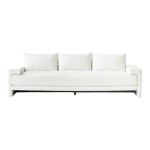Here is an article based on your prompt:
Living Room Paint Ideas to Complement a Blue Sofa
A blue sofa can serve as a striking focal point in a living room. Its versatility allows it to integrate seamlessly with a wide range of interior design styles, from modern minimalist to classic traditional. However, selecting the right paint color to complement a blue sofa is crucial for creating a harmonious and visually appealing space. This article explores various paint color options, providing insights into their impact on the overall ambiance and offering guidance on creating a cohesive design aesthetic.
Understanding the Undertones of Your Blue Sofa
Before diving into specific paint colors, it's essential to understand the undertones of your blue sofa. Blue, like any color, exists in a spectrum with varying undertones. Some blues lean towards warmer tones, exhibiting hints of green or turquoise, while others possess cooler undertones, resembling shades of indigo or navy. Identifying these undertones will significantly influence the selection of complementary wall colors.
If your sofa has a warmer blue shade, consider paint colors with similar warm undertones. These might include warmer grays, creamy whites, or even muted shades of green. Conversely, a cooler blue sofa would pair well with paint colors that have cool undertones, such as cool grays, crisp whites, or pale blues.
To accurately determine the undertones, observe the sofa in different lighting conditions. Natural light will reveal the true color and undertones more clearly than artificial light. Comparing the sofa to color swatches or fabrics with known undertones can also be a helpful exercise. You might also consider taking a high-quality photo of your sofa and using online color matching tools to identify the dominant tones and undertones present.
Neutral Paint Colors: A Timeless and Versatile Choice
Neutral paint colors are a reliable and versatile choice for living rooms with blue sofas. They provide a balanced backdrop that allows the blue sofa to stand out without overwhelming the space. Common neutral options include white, gray, beige, and greige (a blend of gray and beige).
White is a classic choice that creates a bright and airy atmosphere. Different shades of white, from warm ivory to cool off-white, can be used depending on the desired effect and the undertones of the blue sofa. Warmer whites tend to soften the contrast and create a more inviting space, while cooler whites offer a sharper, more contemporary aesthetic.
Gray is another versatile neutral that can be tailored to suit various design preferences. Light grays create a sophisticated and calming ambiance, while darker grays add depth and drama. When selecting a gray paint color, consider the undertones. Warm grays with hints of beige or brown work well with warm blue sofas, whereas cool grays with hints of blue or green complement cooler blue sofas.
Beige provides a warm and inviting alternative to white or gray. It's an excellent choice for creating a cozy and comfortable living room. Lighter beiges can brighten the room, while darker beiges add a touch of sophistication. This neutral pairs elegantly with sofas in the warmer end of the blue spectrum, like turquoise or light cerulean.
Greige, a harmonious blend of gray and beige, offers the best of both worlds. It provides a neutral backdrop with subtle warmth, making it a versatile option for various blue sofa shades. It creates a balanced and inviting atmosphere and often works well in spaces with mixed metal accents and natural wood tones.
Creating Contrast and Visual Interest with Complementary Colors
For a more dynamic and visually stimulating living room, consider using complementary colors to accentuate your blue sofa. Complementary colors are those that sit opposite each other on the color wheel. The complement of blue is orange, but using a pure, saturated orange on the walls can be overwhelming. Instead, opt for muted or softened versions of orange, such as terracotta, peach, or warm browns.
Terracotta is an earthy and grounding color that creates a warm and inviting atmosphere. It pairs exceptionally well with navy blue sofas, creating a sophisticated and balanced contrast. Consider using terracotta as an accent wall or in decorative elements to complement the blue sofa.
Peach provides a softer and more subtle alternative to terracotta. It creates a cheerful and welcoming atmosphere, making it ideal for living rooms that aim for a more relaxed and inviting feel. Peach works well with lighter shades of blue, such as sky blue or baby blue, creating a harmonious and airy space.
Warm Browns, with their rich and earthy tones, can add depth and sophistication to a living room with a blue sofa. Brown pairs well with various shades of blue, from light teal to mid-tone navy, creating a balanced and grounded aesthetic. It evokes a sense of warmth and comfort.
Alternatively, you can explore analogous colors, which are colors that sit next to blue on the color wheel like green and violet. A pale green can create a calming and natural vibe, enhancing the tranquility often associated with blue. Lavender or soft violet shades can add a touch of sophistication and elegance, creating a refined and inviting space.
Considering Accent Walls, Trim Colors, and Decorative Elements
When selecting paint colors, consider the entire room, not just the walls. Accent walls can be used to create visual interest and highlight specific features. Painting a single wall in a bolder or contrasting color can add depth and dimension to the space without overwhelming the room.
The trim color is another important element to consider. White trim is a classic choice that works well with most paint colors, but you can also experiment with other neutral colors or even bolder shades to create a more dramatic effect. The trim and architectural details contribute substantially to the overall aesthetic.
Decorative elements, such as artwork, rugs, and accessories, should also be considered when selecting paint colors. These elements can be used to tie the room together and create a cohesive design. Choose colors that complement both the blue sofa and the paint color to create a harmonious and balanced space.
For example, if you've chosen a neutral gray paint color, you can add pops of color with artwork, throw pillows, or rugs in complementary colors like yellow or orange. If you've opted for a more vibrant paint color, such as terracotta, you can balance the space with neutral-toned furniture and accessories.
Ultimately, the best paint color for your living room will depend on your personal preferences, the specific shade of your blue sofa, and the overall aesthetic you wish to achieve. Don't hesitate to experiment with different colors and combinations to find the perfect palette for your space. Using paint samples to see how the colors look in your space at different times of the day is also a smart idea. Consider the lighting conditions, both natural and artificial, that the room receives, as this will affect how the colors appear.

Blue Living Room Design Ideas For Your Home Designcafe

How To Decorate With A Blue Sofa Interior Design Advice

36 Beautiful Blue Couch Living Room Decorating Ideas Designs 2025

Blue Living Rooms Design Ideas Schemes Farrow Ball

40 Blue Living Room Ideas Transform Your Space With Calming Hues

How To Decorate With A Blue Sofa Interior Design Advice

12 Awesome Wall Colors For A Navy Couch

16 Ideas For Blue Sofas In Living Room Decor Schemes Aspect Wall Art

Blue Living Room Design Ideas For Your Home Designcafe
Best Colors To Have In Your Living Room 2024 From Color Expert Business Insider








